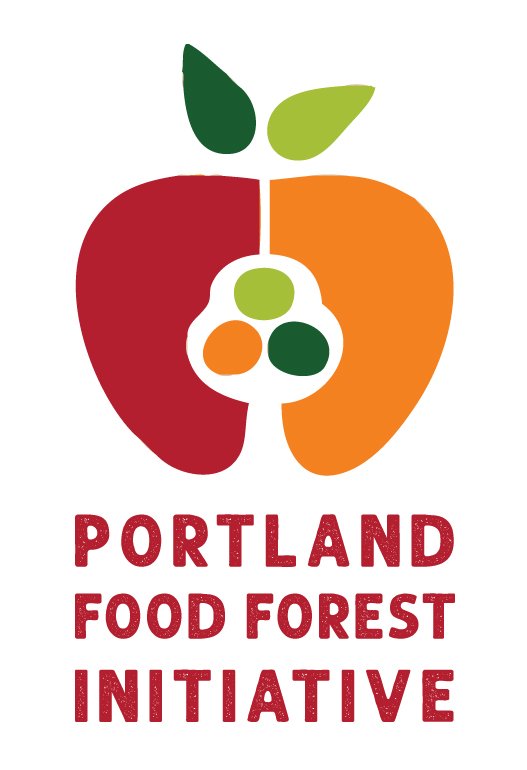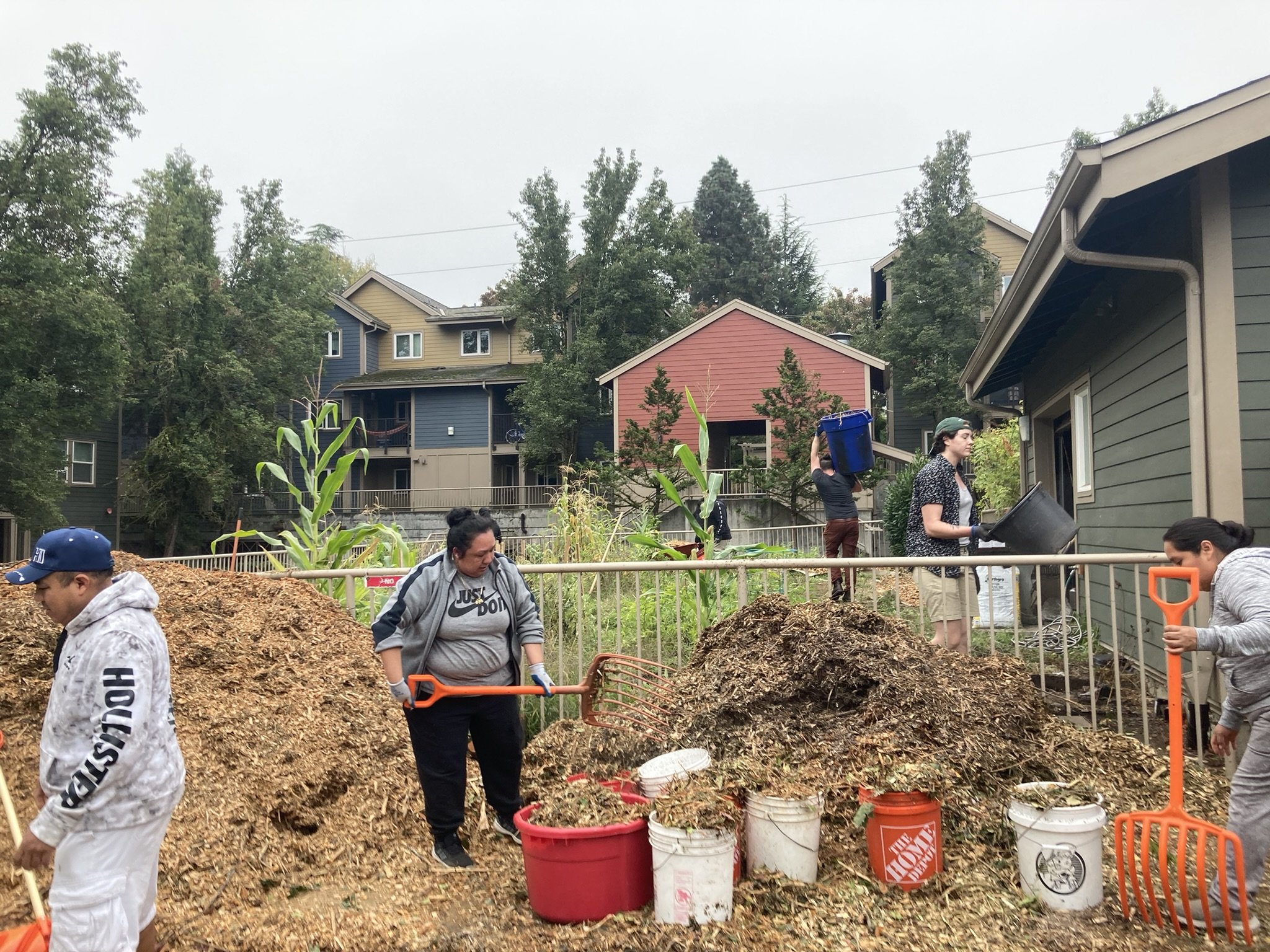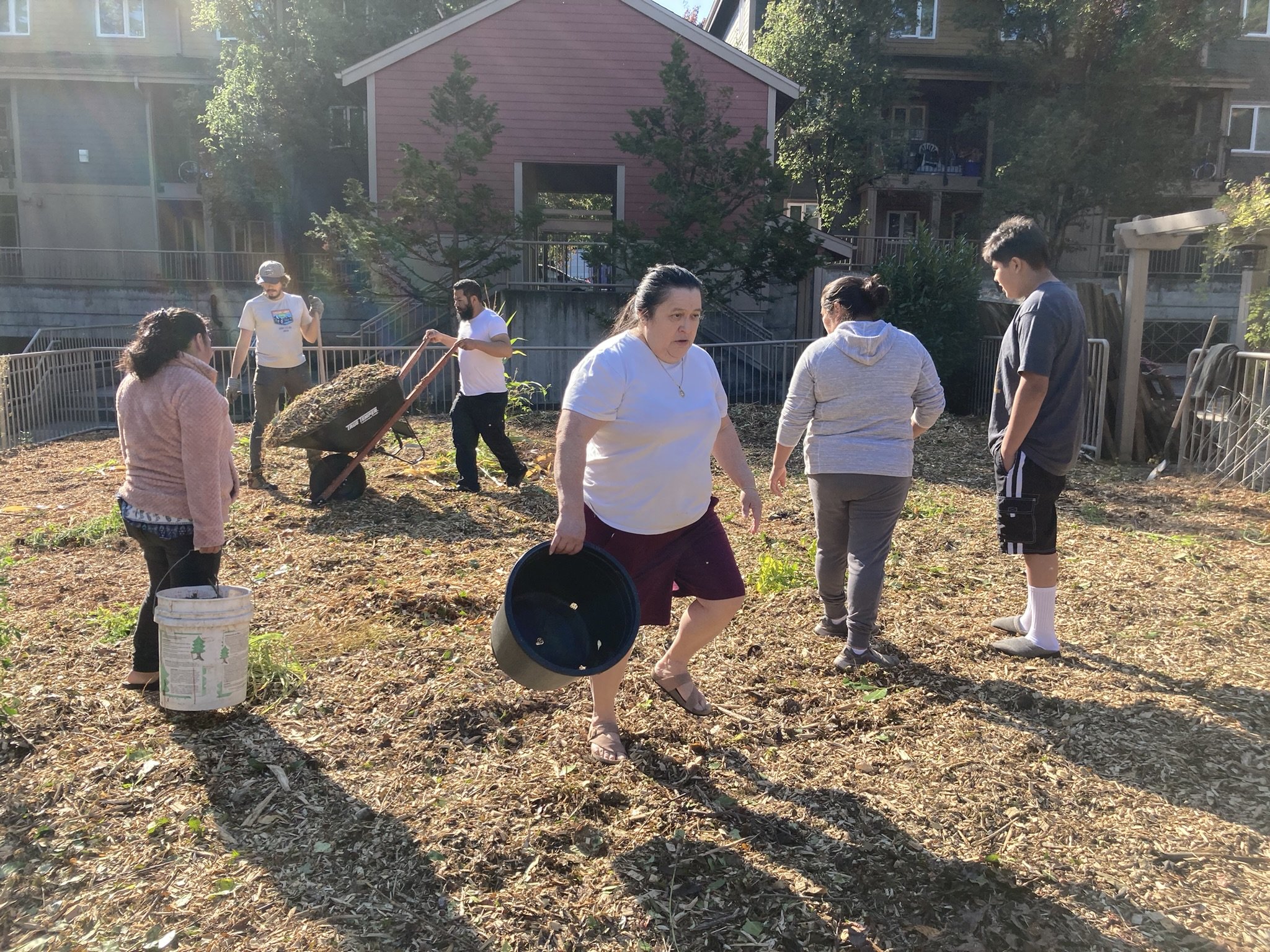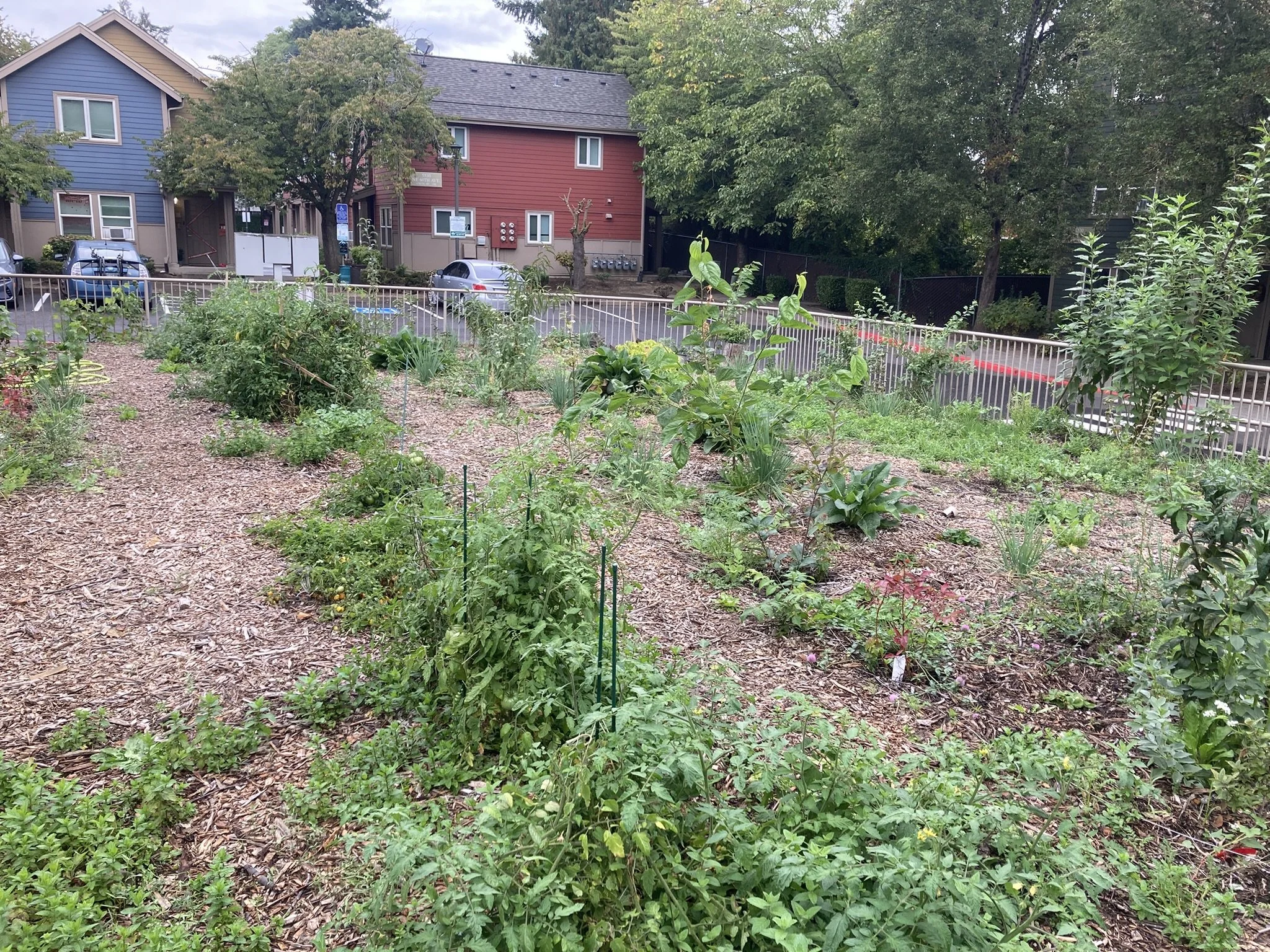Los Jardines Community Food Forest
Food security in a food desert
This food forest is a collaboration with Hacienda CDC and Portland Placemaking Coalition in the Cully neighborhood of NE Portland with funding from a PCEF mini grant. Los Jardines de la Paz is an apartment complex housing a diverse immigrant community that sits in a part of Portland that lacks access affordable fresh produce or community garden plots. Our goal in creating a food forest in the center of the complex (based on syntropic agroforestry principals which allows for annual vegetables to be grown between rows of fruit trees as well as within tree rows) is to empower the residents who are already using this space to grow veggies on small plots, as well as inspire and call in residents who have no experience growing food or interacting with plants.
Since March 2024, we have been working with residents to design the style of food forest that best meets their needs (including a site tour of our Cully Food Forest #1), with residents deciding which fruiting trees and shrubs will be included from a list of plants that thrive in our climate.
In October 2024 we started by laying down brown paper over the grass and established plants, then dumping 6” of fresh woodchips atop (44 cubic yards generously delivered by Honl Tree Care). In early March 2025 we will plant the trees, shrubs, and some of the herbaceous plants while integrating the educational component of the residents’ stewardship. Our goal is to fully train residents over a 3-year period in the total management of the food forest so that they can then be the food forest educators in their community.
This planting’s canopy layer tree guilds will include mulberry, medlar, apple, pear, peach, cherry, fig, and plum.
The shrub layer will include blueberries, currants, gooseberries, jostaberry, goji, elderberry, raspberry, blackberry, and asparagus.
The groundcover will consist of 5 different cultivars of strawberry with sweet potato and squash growing during the summer.
Nitrogen Fixers will include perennials seaberry, goumi, and lupine with fava, pole and bush beans, peanuts, and snap peas during the summer.
The herbaceous Layer will include comfrey, buckwheat, phacelia, mugwort, selfheal, stridolo, purple mountain spinach, parsley, artichoke, tree collards, sea kale, herbs, medicinals, and a variety of pollinator-supporting flowers.
The vine layer will include grapes and hardy kiwi.
The root and mycelial layers include garlic, daikon radish, potatoes, onions, ginger, yacon, and winecap mushrooms


















